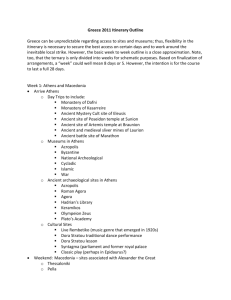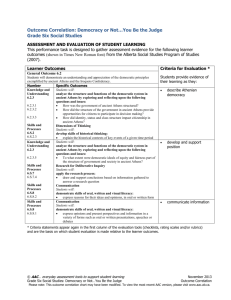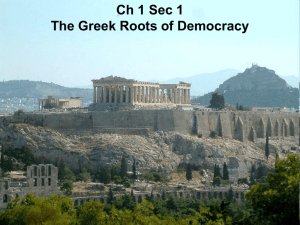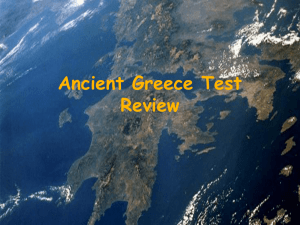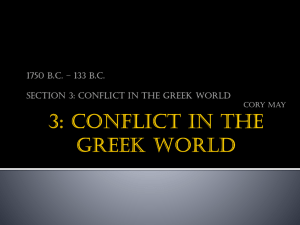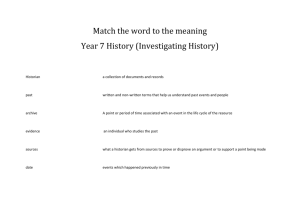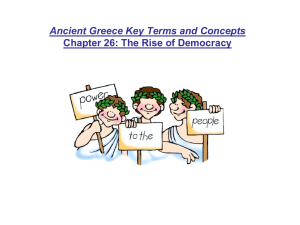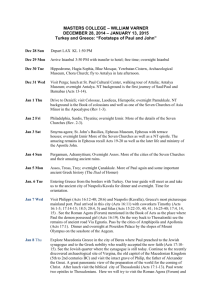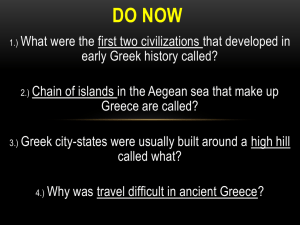Create a walking- tour map of Ancient Athens. Use Cardinal
advertisement
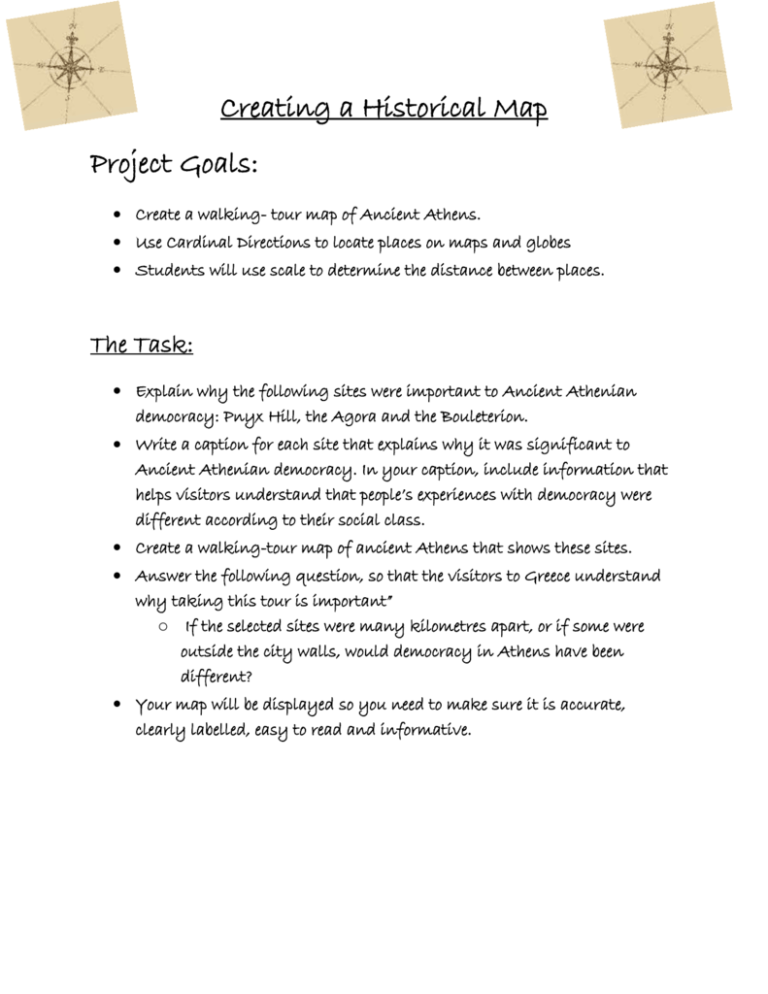
Creating a Historical Map Project Goals: Create a walking- tour map of Ancient Athens. Use Cardinal Directions to locate places on maps and globes Students will use scale to determine the distance between places. The Task: Explain why the following sites were important to Ancient Athenian democracy: Pnyx Hill, the Agora and the Bouleterion. Write a caption for each site that explains why it was significant to Ancient Athenian democracy. In your caption, include information that helps visitors understand that people’s experiences with democracy were different according to their social class. Create a walking-tour map of ancient Athens that shows these sites. Answer the following question, so that the visitors to Greece understand why taking this tour is important” o If the selected sites were many kilometres apart, or if some were outside the city walls, would democracy in Athens have been different? Your map will be displayed so you need to make sure it is accurate, clearly labelled, easy to read and informative. Checklist: Use the checklist to help you keep organized. Ask yourself: Did I include? Title: A brief description of the purpose of the map. (Ancient Athens) A legend that shows a list of symbols or colours on the map with an explanation of what each one means. Compass Rose: A drawing that shows the cardinal directions (North, East, South and West) Scale: A measure that compares distances on the map to actual distances on the ground. Did you write your name on the back of the map? Did I check page 293 of my red text book to see an example? RUBRIC Criteria (6.2 Historical models of democracy) Construct and interpret various types of maps to help me understand historical, physical, and political topics. (6.2.3.8) Use a map scale to calculate the distance between places on a map. (6.2.3.10) Explain how the way society was organized in ancient Athens determined the way government was organized. (6.2.3.16) Exemplary 25-20 Accomplished 19- 12 Developing 12-7 Student can proficiently create a map from the point of view of the ancient Athenians. /10 Student can create a map from the point of view of the ancient Athenian with minor errors Student is developing their map making skills. Student uses proper scale to show actual distances between places. /5 Student included a detailed caption for each site that explains why it is important to Athenian government. /10 Student uses scale to show actual distances between places. Few errors. Student did not use a scale accurately on their map. Student included a caption for each site that somewhat explains why it is important to Athenian government. Student included a brief caption for each site. Timeline: Day one : Project is handed out; description of assignment is discussed and explained. Review project checklist and rubric. Create and draw a legend on your map that shows major buildings, road, city wall, gate. Place your legend in the top left corner. Create a compass rose that shows the directional indicators and add this to the right of the legend. Write a title for your map. Day two: Near the left of the centre of the 8x14 white paper lightly write the name- Agora. o Now ask yourself : o What is the distance from the Agora to Pnyx Hill? o What is the distance from the Agora to Bouleuterion? o What will you use in your scale to show an accurate distance between each place? o Now determine the distances and lightly sketch these locations onto your map. Day three and four: Students lightly sketch an outline of Ancient Athens. The outline should closely resemble the illustration in the student textbook. Create a walking path between each place. Draw the city walls and gates on your map. The scale you use should show the actual distance around and within Ancient Athens. Day five: Draw the border of the Agora. Add in important landmarks or additional buildings that you would be interested to see, such as the Temple of Athena, Temple of Ares, Temple of the Olympian Zeus, the Law Courts Building. Add details.

